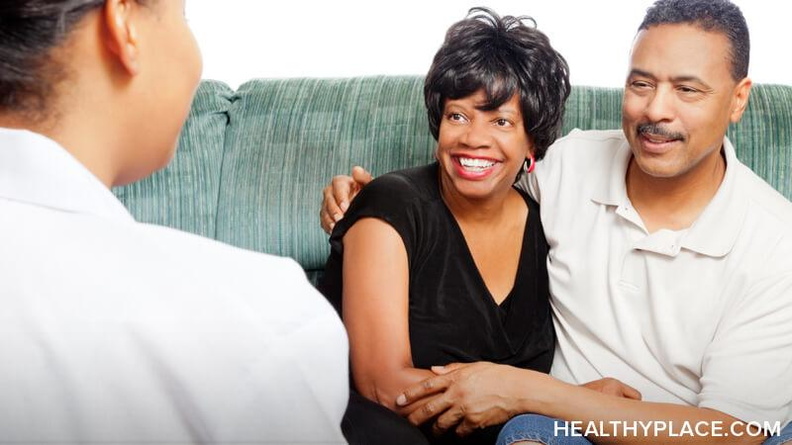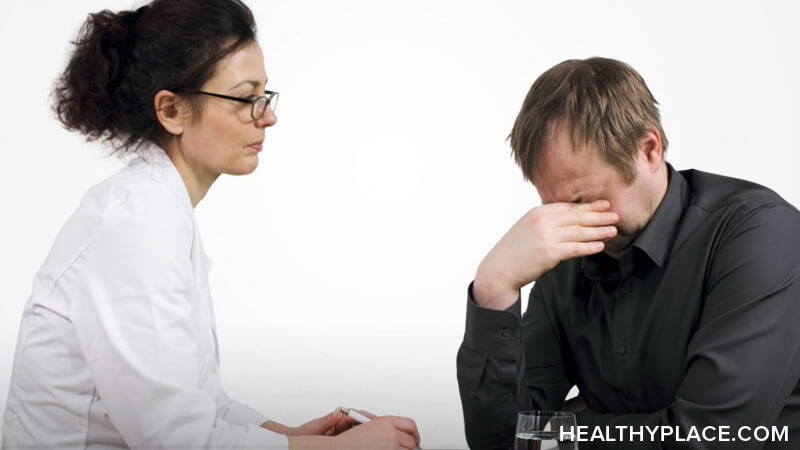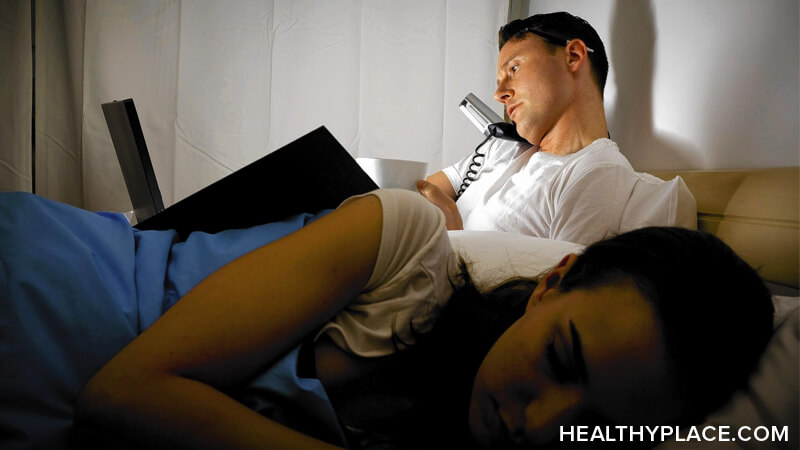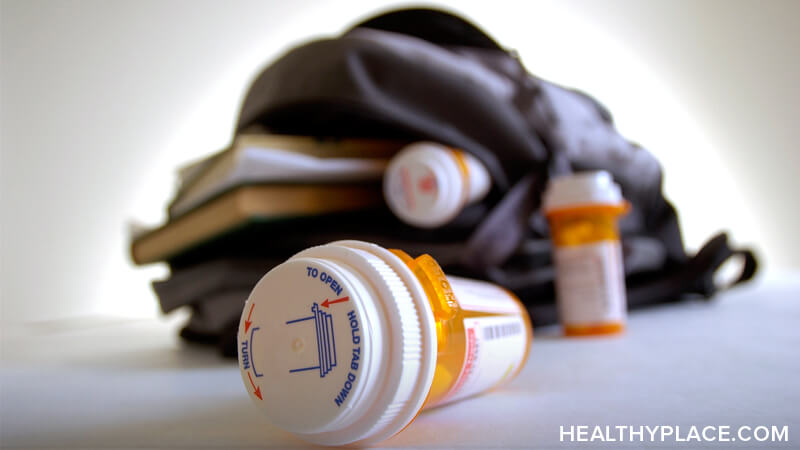Guidelines for Diagnosis and Treatment of Sexual Dysfunction

Underdiagnosis of sexual dysfunction in men and women is a big problem. Read why and find out about the treatments for sexual dysfunction.
Even though more than two out of five adult women and one out of five adult men experience sexual dysfunction in their lifetime, underdiagnosis occurs frequently. To increase recognition and care, multidisciplinary teams of experts recently published diagnostic algorithms and treatment guidelines.The recommendations emanated from the 2nd International Consultation on Sexual Medicine held in Paris from June 28 to July 1, 2003, in collaboration with major urology and sexual medicine associations. Psychiatrists were among the 200 experts from 60 countries who prepared reports on such topics as revised definitions of women's sexual dysfunction, disorders of orgasm and ejaculation in men, and epidemiology and risk factors of sexual dysfunction. Several committees' summary findings and recommendations were published recently in the International Society for Sexual and Impotence Research's inaugural issue of the Journal of Sexual Medicine. Full text of the committees' reports is in Second International Consultation on Sexual Medicine: Sexual Medicine, Sexual Dysfunctions in Men and Women (Lue et al., 2004a).
"The First [International] Consultation in 1999 was restricted to the topic of erectile dysfunction. The second consultation broadened the focus widely to include all of the male and female sexual dysfunctions. The conference was truly multidisciplinary in orientation and patient-centered in its approach to treatment," Raymond Rosen, Ph.D., a vice chair of the international meeting, told Psychiatric Times. Rosen is also associate professor of psychiatry and medicine and director of the Human Sexuality Program at the University of Medicine and Dentistry of New Jersey-Robert Wood Johnson Medical School.
"Sexual problems are highly prevalent in men and women, yet frequently under-recognized and under-diagnosed in clinical practice," even among clinicians who acknowledge the relevance of addressing sexual issues, reported the Clinical Evaluation and Management Strategies Committee (Hatzichristou et al., 2004).
Dysfunctions and Prevalence
Statistics gathered by the Epidemiology/Risk Factors Committee revealed that 40% to 45% of adult women and 20% to 30% of adult men have at least one manifest sexual dysfunction (Lewis et al., 2004). These estimates are similar to those found in a U.S. study (Laumann et al., 1999). In a national probability sample of 1,749 women and 1,410 men ages 18 to 59, among individuals who were sexually active, the prevalence of sexual dysfunction was 43% for women and 31% for men.
Sexual dysfunction in women can include persistent or recurrent disorders of sexual interest/desire, disorders of subjective and genital arousal, orgasmic disorder, and pain and difficulty with attempted or completed intercourse. At the meeting, the International Definitions Committee recommended several modifications to the existing definitions of female sexual disorders (Basson et al., 2004b). The changes include a new definition of sexual desire/interest disorder, division of arousal disorders into subtypes, proposal of a new arousal disorder (persistent genital arousal disorder), and the addition of descriptors indicating contextual factors and degree of distress.
Rosemary Basson, M.D., vice chair of the international meeting and clinical professor in the departments of psychiatry and obstetrics and gynecology at the University of British Columbia, told PT that the revised definitions have been published in the Journal of Psychosomatic Obstetrics and Gynecology (Basson et al., 2003) and are in press in the Journal of Menopause..
Some of the revised definitions are "based on theoretical constructs that we have yet to prove," said Anita Clayton, M.D. Clayton is David C. Wilson professor of psychiatric medicine at the University of Virginia and was a participant in the Clinical Evaluation and Management Strategies Committee. "We need to study these in order to see if they are really going to help us better define sexual dysfunction in women, and therefore be better able to help women seeking treatment."
At the B.C. Centre for Sexual Medicine in Vancouver, which is directed by Basson, some clinicians are diagnosing sexual dysfunction in women using both the revised definitions and the DSM-IV diagnostic criteria for female sexual arousal disorder, hypoactive sexual desire disorder and female orgasmic disorder to help determine which definitions are of benefit in guiding further research and therapy.
For women, the prevalence of manifest low levels of sexual interest varies with age (Lewis et al., 2004). Approximately 10% of women up to age 49 have a low level of desire, but the percentage climbs to 47% among 66- to 74-year-olds. Manifest lubrication disability is prevalent in 8% to 15% of women, although three studies reported prevalence of 21% to 28% in sexually active women. Manifest orgasmic dysfunction is prevalent in one-fourth of women ages 18 to 74, based on studies in the United States, Australia, England and Sweden. Vaginismus is prevalent in 6% of women, as reported in studies of two widely divergent cultures: Morocco and Sweden. The prevalence of manifest dyspareunia, according to different studies, ranges from 2% in elderly women to 20% in adult women generally (Lewis et al., 2004).
Disorders of sexual function in men include erectile dysfunction (ED), orgasm/ejaculation disorders, priapism and Peyronie's disease (Lue et al., 2004b). The prevalence of ED increases with age. In men age 40 and younger, the prevalence of ED is 1% to 9% (Lewis et al., 2004). The prevalence climbs to 20% to 40% in most men ages 60 to 69 and is 50% to 75% in men in their 70s and 80s. Prevalence rates for ejaculatory disturbances range from 9% to 31%.
Comprehensive Assessments
Evaluation and treatment of sexual dysfunction problems in men and women need to include patient-physician dialogue, history taking (sexual, medical and psychosocial), focused physical examination, specific laboratory tests (as needed), specialist consultation and referral (as needed), shared decision making and treatment planning, and follow-up (Hatzichristou et al., 2004).
They warned, "Careful attention should always be paid to the presence of significant comorbidities or underlying etiologies." Potential etiologies for sexual dysfunction include a wide range of organic/medical factors, such as cardiovascular disease, hyperlipidemia, diabetes, and hypogonadism and/or psychiatric disorders, such as anxiety and depression. Additionally, organic and psychogenic factors may coexist. In some disorders, such as ED, diagnostic tests and procedures can be used to separate organically based cases from psychogenic cases. Medications that can cause problems in sexual functioning include antidepressants, conventional antipsychotics, benzodiazepines, antihypertensive drugs and even some medications for treating stomach acid and ulcers, Clayton noted.
When treating patients with psychiatric disorders, Clayton said clinicians should also consider the presence of sexual dysfunction.
"If you look at depression, the most common complaint is a diminished libido associated with other symptoms of depression," she said. "Sometimes people have arousal problems as well. Orgasmic dysfunction with depression is usually related to the medications, not to the condition itself."
Among patients with psychotic disorders, men in particular may experience significant sexual dysfunction, according to Clayton. They are less likely than women with psychotic conditions to be involved in sexual activity with another person, and they have problems throughout the phases of the sexual response cycle.
Individuals with anxiety disorders can have problems with arousal and orgasm, Clayton said. "If you don't get arousal, it is hard to have an orgasm. And then as a result, you start to see decreased desire--mostly avoidance, performance anxiety or concerns that it is not going to work right," she added.
Patients with substance use disorders, such as alcoholism, may also experience sexual dysfunction.
Psychosocial assessments should be an integral part of patient evaluations, several committees emphasized. For example, Hatzichristou et al. (2004) wrote:
The physician should carefully assess past and present partner relationships. Sexual dysfunction may affect the patient's self-esteem and coping ability, as well as his or her social relationships and occupational performance.
They added "the physician should not assume that every patient is involved in a monogamous, heterosexual relationship."
More in-depth guidance on the psychosocial assessment was provided by the Committee on Sexual Dysfunctions in Men (Lue et al., 2004b). They presented a new screening tool for male sexual function (Male Scale) that includes psychosocial and sexual function assessments as well as a medical assessment. The psychosocial assessment asks the male patient, for example, whether he has sexual fears or inhibitions; problems finding partners; uncertainty about his sexual identity; a history of emotional or sexual abuse; significant relationship problems with family members; occupational and social stresses; and a history of depression, anxiety or emotional problems. Another critical aspect of assessment "is the identification of patient needs, expectations, priorities and treatment preferences, which may be significantly influenced by cultural, social, ethnic and religious perspectives" (Lue et al., 2004b).
The Committee on Sexual Dysfunctions in Women emphasized that assessment of psychosocial and psychosexual history is strongly recommended for all sexual dysfunctions (Basson et al., 2004a). The psychosocial history needs to establish the woman's current mood and mental health; identify the nature and duration of her current relationships, as well as societal values and beliefs impacting sexual problems; clarify the woman's developmental history as it relates to caregivers, siblings, traumas and losses; clarify circumstances, including relationship at the time of the onset of sexual problems; clarify the woman's personality factors; and clarify her partner's mood and mental health.
For women who disclose a history of past sexual abuse, further assessment was recommended (Basson et al., 2004a):
This includes assessment of the woman's recovery from the abuse (with or without past therapy), whether she has a history of recurrent depression, substance abuse, self-harm or promiscuity, if she is unable to trust people, especially those of the same gender as the perpetrator, or if she has an exaggerated need for control or need to please (and an inability to say no). The details of the abuse may be needed, especially if they were previously unaddressed. Assessment of the sexual dysfunctions per se may be deferred temporarily.
Sexual dysfunctions are often comorbid (e.g., sexual interest/desire disorder and subjective or combined sexual arousal disorder) (Bason et al., 2004a):
Occasionally women with emotionally traumatic pasts reveal that their sexual interest occurs only when emotional closeness with a partner is absent. In such cases, there is an inability to sustain that interest when and if emotional intimacy with the partner develops. This is a fear of intimacy and is not strictly a sexual dysfunction.
With regard to sexual functioning, Clayton told PT the Clinical Evaluation and Management Strategies Committee looked at various instruments to assess the current level of sexual functioning. Several were found to be comprehensive and useful, including the Changes in Sexual Functioning Questionnaire (CSFQ) developed at the University of Virginia, the Derogatis Interview for sexual functioning (DISF-SR), the Female Sexual Function Index (FSFI), the Golombok-Rust Inventory of Sexual Satisfaction (GRISS), the International Index of Erectile Function (IIEF) and the Sexual Function Questionnaire (SFQ). The sexual function instruments can be used not only at the beginning stages of assessment but to follow patients through the course of treatment.
Treatment Considerations
After patients receive a comprehensive evaluation, patients (and their partners where possible) should be given a detailed description of available medical and nonmedical treatment options (Hatzichristou et al., 2004).
Rosen noted that treatment is the most advanced in the area of ED. "We have three approved drugs: ... tadalafil [Cialis] as first-line treatment agents, along with couple's or individual therapy for the treatment of ED," he said. "Effective and safe treatments are lacking for most sexual dysfunctions in women."
For psychological management of low sexual interest and comorbid arousal disorders in women, cognitive-behavioral techniques (CBT), traditional sex therapy and psychodynamic treatments are used (Basson et al., 2004a). There is limited evidence of the benefits of CBT in terms of controlled trials and some empirical support for traditional sex therapy with sensate focus. Psychodynamic treatment is currently recommended, but there are no randomized studies to support its use. For vaginismus, conventional psychotherapy has included psychoeducation and CBT. Cognitive-behavioral therapy is also used for treating anorgasmia, according to the Disorders of Orgasm in Women Committee (Meston et al., 2004):
Cognitive-behavioral therapy for anorgasmia focuses on promoting changes in attitudes and sexually-relevant thoughts, decreasing anxiety, and increasing orgasmic ability and satisfaction. Behavioral exercises traditionally prescribed to induce these changes include directed masturbation, sensate focus, and systematic desensitization. Sex education, communication skills training, and Kegel exercises are also often included.
For patients with ED, oral therapies, such as selective phosphodiesterase type 5 (PDE5) inhibitors (e.g., sildenafil, vardenafil and tadalafil); apomorphine SL (sublingual), a centrally acting nonselective dopamine agonist registered in several countries since 2002; and yohimbine, a peripherally and centrally acting α-blocker, "may be considered first-line therapies for the majority of patients with ED because of potential benefits and lack of invasiveness" (Lue et al., 2004b). It should be noted, however, that PDE5 inhibitors are contraindicated in patients receiving organic nitrates and nitrate donors.
For treatment of premature ejaculation, there are three drug treatment strategies: daily treatment with serotonergic antidepressants; as-needed treatment with antidepressants; and the use of topical local anesthetics, such as lignocaine or prilocaine (McMahon et al., 2004). A meta-analysis of daily treatment with paroxetine (Paxil), clomipramine (Anafranil), sertraline (Zoloft) and fluoxetine (Prozac) found that paroxetine exerts the strongest ejaculation delay (Kara et al., 1996, as cited in McMahon et al., 2004). (See related article on premature ejaculation on p16 of the printed version of this issue--Ed.)
Administration of an antidepressant as needed four to six hours prior to intercourse is efficacious and well tolerated and associated with less ejaculatory delay. It is "unlikely that phosphodiesterase inhibitors have a significant role in the treatment of PE with the exception of men with acquired PE secondary to comorbid ED" (McMahon et al., 2004).
Clayton noted that the biggest sexual problem that women in the general population tend to have is low desire, adding that studies are underway to look for potential pharmacologic treatments.
There are no approved non-hormonal pharmacologic therapies for women with low sexual interest and arousal disorders (Basson et al., 2004a). These authors noted that the use of tibolone for postmenopausal women is promising, but the women in those two randomized clinical trials did not have sexual dysfunction. Tibolone is a steroid compound marketed in the United Kingdom; it combines oestrogenic, progestogenic and androgenic properties that mimic the action of the sex hormones. The use of bupropion (Wellbutrin) is of interest but needs further study (Basson et al., 2004a). The use of phosphodiesterase inhibitors is not recommended for low interest and comorbid arousal disorders in women. (Recently, Pfizer, Inc. reported that several large-scale, placebo-controlled studies including some 3,000 women with female sexual arousal disorder showed inconclusive results in the efficacy of sildenafil--Ed.)
While estrogen therapy may improve low interest and/or arousal disorders, low doses and the use of progesterogen to oppose estrogen's adverse effects are recommended in all women with an intact uterus (Basson et al., 2004a). More research is needed on the use of testosterone therapy.
In women with genital arousal disorder, the use of local estrogen therapy for sexual symptoms resulting from vulvovaginal atrophy is recommended. These include not only genital arousal disorder with its lack of pleasure from direct genital stimulation, vaginal dryness, and dyspareunia but also frequent urinary tract infections lowering sexual interest and arousability. However, long-term systemic estrogen therapy is not recommended because of the lack of safety versus benefit data. For genital arousal disorder unresponsive to estrogen therapy, the investigational use of phosphodiesterase inhibitors is "cautiously recommended" (Basson et al., 2004a).
For women suffering from vulvar vestibulitis syndrome, the use of tricyclic antidepressants or anticonvulsants was also "cautiously recommended" (Basson et al., 2004a).
In women suffering from female orgasmic disorder, data on pharmacological approaches were noted to be scarce (Meston et al., 2004):
Placebo-controlled research is needed to examine the effectiveness of agents with demonstrated success in case series or open-label trials (i.e., bupropion, granisetron [Kytril], and sildenafil) on orgasmic function in women.
Regardless of the treatment options chosen for specific sexual dysfunctions, "follow-up is essential to ensure the best treatment outcome" (Hatzichristou et al., 2004). Important aspects of follow-up include "monitoring of adverse events, assessing satisfaction or outcome associated with a given treatment, determining whether the partner may also suffer from a sexual dysfunction, and assessing overall health and psychosocial function."
SOURCES:
Basson R, Althof S, Davis S et al. (2004a), Summary of the recommendations on sexual dysfunctions in women. Journal of Sexual Medicine 1(1):24-34.
Basson R, Leiblum S, Brotto L et al. (2003), Definitions of women's sexual dysfunction reconsidered: advocating expansion and revision. J Psychosom Obstet Gynecol 24(4):221-229.
Basson R, Leiblum S, Brotto L et al. (2004b), Revised definitions of women's sexual dysfunction. Journal of Sexual Medicine 1(1):40-48.
Hatzichristou D, Rosen RC, Broderick G et al. (2004), Clinical evaluation and management strategy for sexual dysfunction in men and women. Journal of Sexual Medicine 1(1):49-57.
Laumann EO, Paik A, Rosen RC (1999), Sexual dysfunction in the United States: prevalence and predictors. [Published erratum JAMA 281(13):1174.] JAMA 281(6):537-544 [see comment].
Lewis RW, Fugl-Meyer KS, Bosch R et al. (2004), Epidemiology/risk factors of sexual dysfunction. Journal of Sexual Medicine 1(1):35-39.
Lue TF, Basson R, Rosen R et al., eds. (2004a), Second International Consultation on Sexual Medicine: Sexual Dysfunctions in Men and Women. Paris: Health Publications.
Lue TF, Giuliano F, Montorsi F et al. (2004b), Summary of the recommendations on sexual dysfunctions in men. Journal of Sexual Medicine 1(1):6-23.
McMahon CG, Abdo C, Incrocci L et al. (2004), Disorders of orgasm and ejaculation in men. Journal of Sexual Medicine 1(1):58-65.
Meston CM, Hull E, Levin RJ, Sipski M (2004), Disorders of orgasm in women. Journal of Sexual Medicine 1(1):66-68.
APA Reference
Staff, H.
(2021, December 17). Guidelines for Diagnosis and Treatment of Sexual Dysfunction, HealthyPlace. Retrieved
on 2025, May 22 from https://www.healthyplace.com/sex/main/guidelines-for-diagnosis-and-treatment-of-sexual-dysfunction


 Practicing "Safer Sex"
Practicing "Safer Sex"




